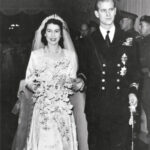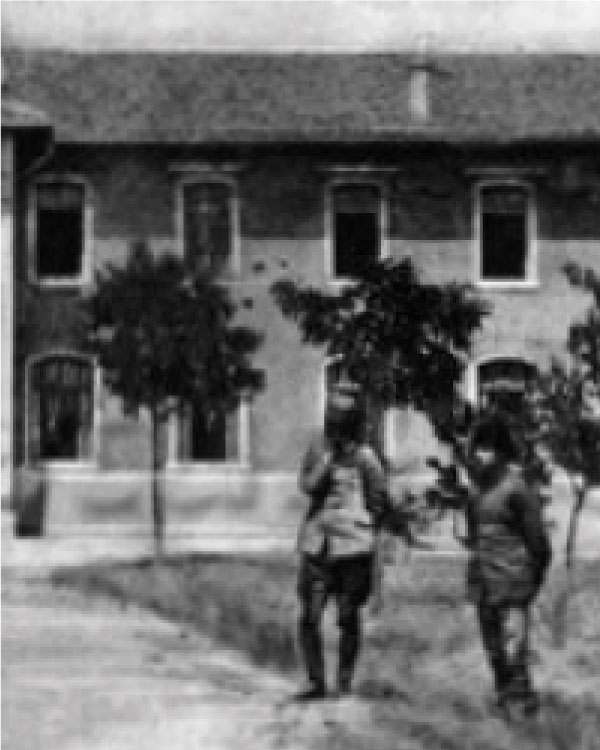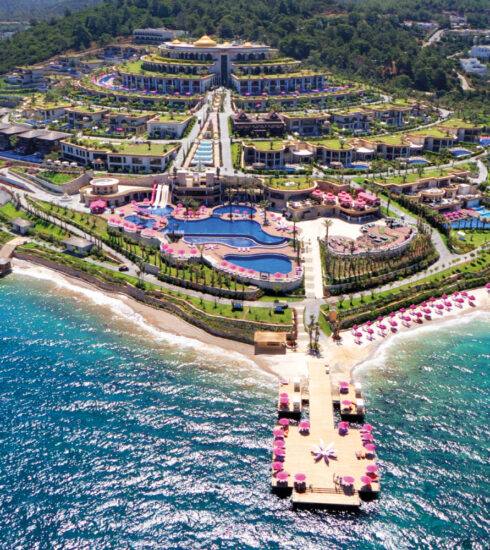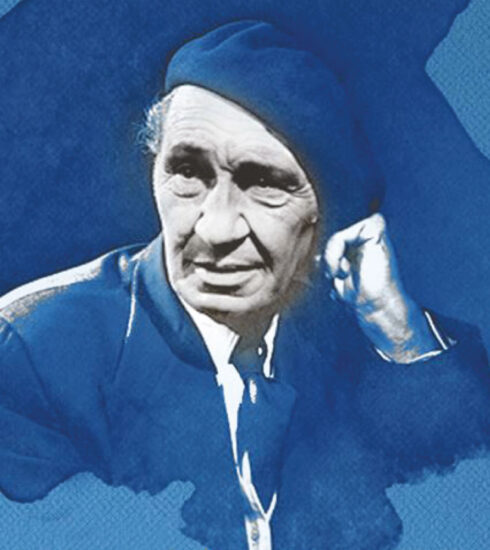ATATÜRK’ÜN ANKARA’YA GELİŞİNİN YÜZÜNCÜ YILI
Her yıl 27 Aralık geldi mi özellikle Ankara’da bir kutlama havası, bir coşku, bir heyecan yaşanır. Okullarda, kurumlarda törenler yapılır.
Ankara sokakları bayram havasına döner, kutlamalar tüm şehri sarar. Bu tarih, Atatürk’ün Ankara’ya gelişinin, Ankara’dan başlattığı bir mücadelenin tarihidir.
Atatürk’ün Ankaralılar için, Ankaralıların Atatürk için ayrı bir önem taşımasının tarihidir.
Bu yıl yine 27 Aralık günü aynı coşku yaşandıç Aradan yüz yıl geçmesine rağmen Ankaralılar aynı coşkuyla meydanları doldurdular, Atatürk’ün Ankara’ya gelişini kutladılar.
100 Yıl Önce 27 Aralık 1919
27 Aralık 1919 Cumartesi günü Ankara’da bir başka telaş, bir başka heyecan yaşanıyordu.
O gün orada bulunanların anlatımına göre, genç, yaşlı, çoluk çocuk binlerce Ankaralı, büyük bir coşkuyla atasını karşılamaya geliyordu. Köylerden atlarla, kağnı arabalarıyla; erkekler, kadınlar, çocuklar, Ankara’ya akın etmişti. Esnaflar, öğrenciler, din adamları, Atayı karşılamak için yollara dökülmüştü.
Çankaya ve Dikmen tepelerinden ezanlar, salalar okunuyordu. Bir yanda davul zurnalar çalıp efeler, zeybekler oyuna dururken; diğer yanda Ankara Seymenleri, silahlarını kuşanmış atlı yayan hazır bekliyorlardı. Henüz 38 yaşında olmasına rağmen güçlü, mağrur, güven veren duruşuyla otomobilden indiğinde tüm nefesler tutulmuş O’nu izliyordu…
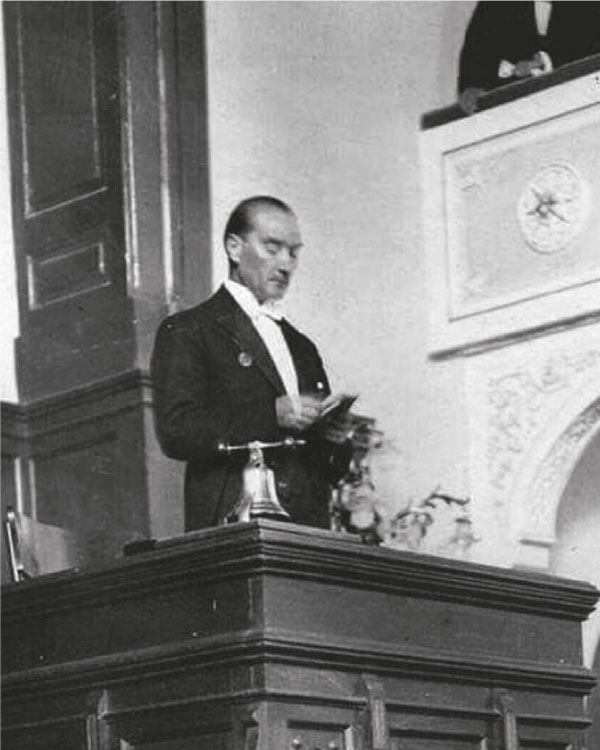
“Vatanı ve milleti düşmandan kurtarmak için hepimiz ölmeye hazırız, emrinizi bekliyoruz!”
And according to the records, there was a dialogue:
– Hello, sirs.
– Thanks Holiness Pasha
– Friends, why did you come here?
– We’re here to die on the way of Nation.
– Are you stable in your opinion?
– By oath…
This dialogue was made with the whole nation in Ankara as if it was promised a national struggle, a struggle for liberation.
Mustafa Kemal describes this enthusiastic welcome as follows:
“On the day of my first arrival to Ankara, I was only a citizen, an individual of the nation. I had no title, authority or role. In spite of this, Ankara and its environs always filled the plain with the children, women and the elderly from the city of Ankara to the Dikmen hill and welcomed me.
The street stretching from the station to the government office was dressed in old Turkish clothes on both sides, and were filled by Ankara youth with the knives and pistols in their hands. These young people and all the people with them were shouting: “We are all ready to die, waiting for your order to save the country and nation from the enemy!”
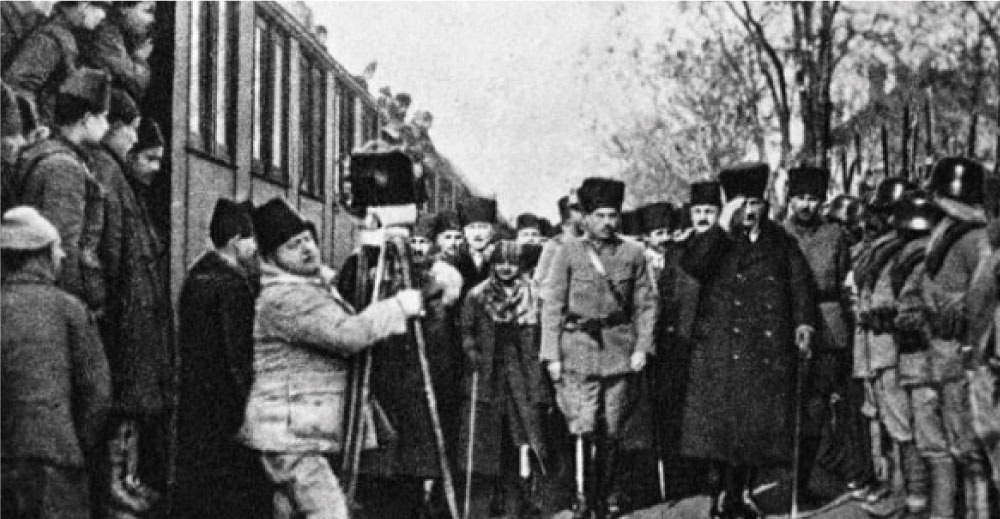
At that time the Ankara station was under the occupation of foreign officers and soldiers. These foreigners who thought that the people of Ankara were dead and ruined until that date saw that they could not stop themselves from showing their first concerns in the face of this high cheer.
19 May 1919 from Samsun to 27 December 1919 to Ankara
Mustafa Kemal, who went to Samsun on May 19, 1919 and started the struggle for Independence War he went to the provinces of Amasya, Erzurum, Sivas respectively and held congresses there. In all these congresses, decisions were taken to establish a government based on national will. Telegraphs were sent to the cities and they were asked to elect a representative.
A meeting place for representatives chosen over the turkey was necessary. Because of its geographical location and distance from the fronts, Atatürk thought that the War of Independence would be best managed from Ankara and the delegation completed the national struggle journey in Samsun with the members of the Delegation on the ridge of Dikmen in Ankara. Then he made the beginning of the War of Independence struggle here. Later, Ankara made the capital and formed the entire political structure.
Why Ankara?
Atatürk’s arrival in Ankara is very important for the establishment of the independent Republic of Turkey and the commencement of the Turkish War of Independence.
Many developments and preparations, such as the establishment of the Turkish Grand National Assembly and the establishment of the Turkish army, were carried out in Ankara. Ankara became the center of the national struggle, it began to play its role as the capital city already in those days. The reasons for the selection of Ankara include being in the center of Anatolia, the railway connection, the establishment of the telegraph network, the devotion of democracy to the belief of the people of Ankara and the love of Mustafa Kemal.
In his memoirs, Atatürk refers to this issue as follows: ”I learned Ankara in history rather than the geography book and learned it as the center of the republic. In fact, when I read the names of the small governments established in Anatolia upon the disintegration of the Seljuk administration, I saw the Republic of Ankara among some principalities. On the day when I first came to Ankara, where the pages of history introduced me as a republic center, I saw that despite the intervening centuries, the republic predisposition still continues in Ankara. Turkey pushes me to thinking about the most suitable center would be the first occasion Ankara is very old and is technically. “
From Steppe to Capital
The city Ankara of 27 December1919, in the middle of Anatolia, a barren, neglected city in which streams were passing. With the mud-brick houses it was a typical Central Anatolian city with a warm, welcoming and hospitable people living in it, most of the people were Muslim Turks.
At that time the population of the city is about 20 thousand. Most of the population was engaged in agriculture and mohair goat breeding was widespread.
When you looked in Samanpazarı, Ulus, Dis Kapi, Kale Ici, these settlements did not have the status of being the capital.
The location of the present Atatürk Forest Farm was a stony land.
Ulus, Kale and surrounding settlements were common. The part from Sıhhiye to Kavaklıdere was between the castle and its vicinity where the residents lived and the vineyard houses were empty. Here, Ataturk, with his strategic knowledge, great foresight, came to this steppe city, to manage the War of Independence from here, he chose to make this place an exemplary city and the capital of the nation.
When he came to Ankara, he first sat in the Agricultural School, then in the train station, in a building called the Steering Wheel. Ankara Municipality bought the vineyard house in Çankaya in 1921 and gave it to Atatürk.
Atatürk experienced the enthusiasm of the first years of the Republic with the troubled days of the War of Independence at the Çankaya Presidential Palace. He showed maximum effort to become the city’s worthy of being the capital of the new Republic of Turkey. Atatürk, who loved tree and green very much, was determined to turn this barren steppe city into green. In particular, he closely followed the efforts to establish Atatürk Forest Farm.
At the time, a stream was flowing in the farmland, a swamp in places, it was a barren place and a source of mosquito.
He gathered agricultural engineers to reform and green the place and set up a model farm here, despite their promises that it would take a lot of money and patience. As a matter of fact, he founded Atatürk Forest Farm, which is still the eye of Ankara today, with patience, love and spending his own labor and money.
As long as his health allowed, he established many schools, hospitals and factories and provided the city to be reborn; he had added the night to the day to establish a capital worthy of the new Republic. In fact, what they have done on this subject is long enough to be another writing topic.
It is possible to see Atatürk’s signature on every stone, every street, every building of today’s Ankara. May god bless your soul, Great Leader…
Ve kayıtlara göre şöyle bir diyalog yaşanıyordu:
-Merhaba efendiler
-Sağol Paşa Hazretleri
-Arkadaşlar buraya neden geldiniz?
-Millet yolunda can vermeye geldik.
-Fikrinizde sabit misiniz?
-And olsun…
Bu diyalog tüm milletle yapılmışçasına o gün adeta bir milli mücadelenin, bir kurtuluş mücadelesinin sözü verildi Ankara’da.
Bu coşkulu karşılamayı Mustafa Kemal şöyle anlatır:
“Ankara’ya ilk kabul olunduğum gün, ben sadece bir vatandaş, milletin bir bireyi idim. Hiçbir sıfatım, yetkim ve unvanım yoktu. Böyle olmakla birlikte Ankara ve çevresi hep birden çocuklarıyla, kadınlarıyla, yaşlılarıyla Ankara şehrinden Dikmen tepesine kadar bütün ovayı doldurmuş ve beni karşılamıştır.
İstasyondan hükümet dairesine kadar uzayan caddenin iki tarafı eski Türk kıyafetini giymiş, bıçakları ve tabancaları ellerinde Ankara gençleriyle dolmuştu. Bu gençler ve onlarla birlikte bütün halk:
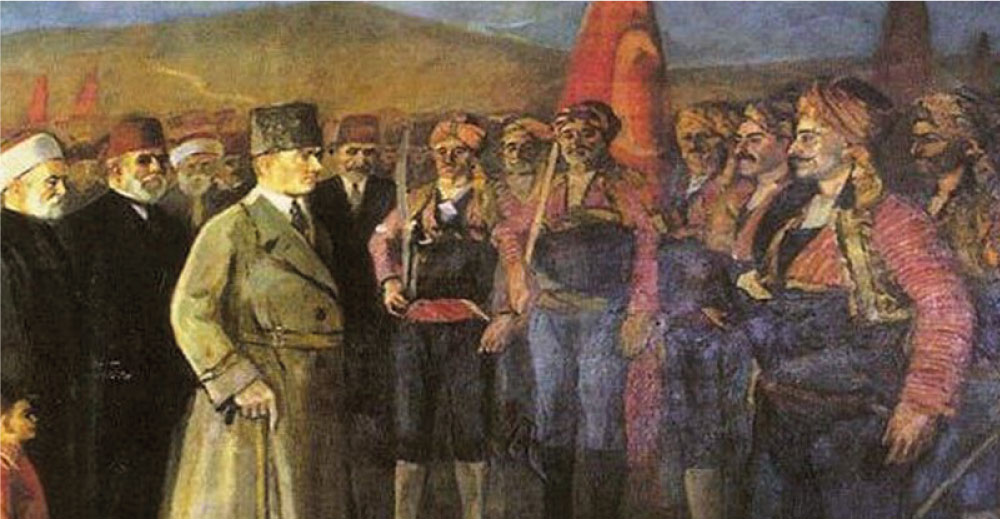
“Vatanı ve milleti düşmandan kurtarmak için hepimiz ölmeye hazırız, emrinizi bekliyoruz!” diyerek bağırıyorlardı. O zaman Ankara istasyonu yabancı subay ve askerlerinin işgali altında bulunuyordu. O güne kadar Ankaralıları ölü ve Ankara’yı harabe sanan bu yabancılar, bu yüce tezahürat karşısında ilk kaygılarını göstermekten kendilerini alamamışlardır.
19 Mayıs 1919 Samsun’dan 27 Aralık 1919 Ankara’ya
19 Mayıs 1919 günü Samsun’a çıkarak Kurtuluş Savaşı mücadelesini başlatan Mustafa Kemal; daha sonra sırasıyla Amasya, Erzurum, Sivas illerine giderek buralarda Kongreler yapmıştı. Tüm bu kongrelerde milli iradeye dayalı bir hükümetin kurulması yönünde kararlar alınmıştı. Şehirlere telgraflar gönderilerek kendilerine bir temsilci seçmeleri istenmişti.
Türkiye’nin dört bir yanından seçilen temsilciler için bir toplanma yeri gerekliydi. Coğrafi konumu ve cephelere olan uzaklığı nedeniyle Kurtuluş Savaşı’nın en iyi Ankara’dan yönetileceğini düşünen Atatürk, Heyeti Temsiliye üyeleriyle Samsun’da başlayan milli mücadele yolculuğunu Ankara’nın Dikmen sırtlarında tamamladı. Ardından da Kurtuluş Savaşı mücadelesinin başlangıcını burada yaptı. Daha sonra da Ankara’yı başkent yaparak tüm siyasi yapılanmayı oluşturdu.
Neden Ankara?
Atatürk ün Ankara’ya gelişi, bağımsız Türkiye Cumhuriyeti’nin kurulması ve Kurtuluş Savaşı’nın başlatılması için oldukça önemli.
TBMM‘nin kuruluşu ve Türk ordusunun kurulup, çalışmalarına başlaması gibi birçok gelişme ve hazırlık Ankara’da yapıldı. Milli mücadelenin merkezi haline gelen Ankara, daha o günlerde başkent görevini yapmaya başlamıştı. Ankara’nın seçilmesi nedenleri arasında Anadolu’nun merkezinde oluşu, demiryolu bağlantısı, telgraf şebekesinin oluşu, Ankara halkının ahilik geleneğinden de gelen bir inançla demokrasiye bağlılığı ve Mustafa Kemal sevgisi sıralanabilir.
Atatürk, anılarında bu konuya şöyle değinir: ” Ben Ankara’yı coğrafya kitabından çok, tarihte öğrendim ve cumhuriyet merkezi olarak öğrendim. Gerçekten Selçuklu idaresinin parçalanması üzerine Anadolu’da kurulan küçük hükümetlerin adlarını okurken, birtakım beylikler arasında bir de Ankara Cumhuriyeti’ni görmüştüm. Tarih sayfalarının bana bir cumhuriyet merkezi olarak tanıttığı Ankara’ya ilk defa geldiğim o gün de gördüm ki aradan geçen yüzyıllara rağmen Ankara’da hala o cumhuriyet yatkınlığı devam ediyor. Beni Türkiye’ye en uygun merkezin Ankara olabileceğini düşünmeye iten ilk vesile çok eskidir ve tekniktir”
Bozkırdan Başkente
27 Aralık 1919 yıllarının Ankara’sı, Anadolu’nun ortasında, çorak, bakımsız içinden dereler geçen bir şehir. Kerpiç evleri, içinde yaşayan sıcak,kendi halinde, misafirperver halkıyla tipik bir Orta Anadolu şehri…Halkının çoğu Müslüman Türklerden oluşuyordu.
O dönem şehrin nüfusu 20 bin civarında. Nüfusun çoğunluğu tarımla uğraşıyor, tiftik keçisi yetiştiriciliği yaygın olarak yapılıyordu.
Samanpazarı Ulus Dış kapı Kale içine bakınca bu yerleşim yerlerinin başkent olacak bir vaziyeti yoktu.
Şimdiki Atatürk Orman Çiftliği’nin bulunduğu yer taşlık bir araziydi.
Ulus, Kale ve civarında yerleşim yaygındı. Sıhhiye’den Kavaklıdere’ye kadar olan kısım, Ankaralıların oturduğu kale ve civarı ile bağ evlerinin arası bomboştu. İşte Atatürk, strateji bilgisiyle, müthiş öngörüsüyle, bu bozkır şehrine gelip, Kurtuluş Savaşı’nı buradan idare etmeyi, burayı örnek bir şehir, milletin başkenti yapmayı seçti ve yaptı da.
Ankara’ya gelince ilk önce Ziraat Mektebi’nde, sonra tren istasyonunda, Direksiyon denilen binada oturdu. Ankara Belediyesi, 1921 yılında Çankaya’daki bağ evini satın alarak Atatürk’e hediye etti.
Atatürk Çankaya Köşkü’nde Kurtuluş Savaşı’nın sıkıntılı günleriyle Cumhuriyetin ilk yıllarının coşkusunu yaşadı. Şehrin yeni Türkiye Cumhuriyetinin başkenti olmasına yaraşır hale gelmesi için büyük uğraş verdi. Ağacı, yeşili çok seven Atatürk, bu çorak bozkır şehri yeşile döndürmekte kararlıydı. Özellikle Atatürk Orman Çiftliği’ni kurmak için çalışmaları yakından takip etti.
O dönem çiftliğin olduğu arazide bir dere akıyordu, yer yer bataklık, yer yer çorak ve sivrisinek kaynağı bir yerdi.
Burayı ıslah ettirip yeşillendirmek ve burada örnek bir çiftlik kurmak için ziraat mühendislerini topladı, onların bunun için çok para ve sabır gerekir sözlerine rağmen yılmadı. Nitekim sabırla, sevgiyle, ve kendi emek ve parasını da harcayarak bugün hala Ankara‘nın gözbebeği olan Atatürk Orman Çiftliğini kurdu.
Sağlığı elverdiği sürece birçok okul, hastane, fabrika kurarak, şehrin adeta yeniden doğmasını sağlamış; yeni Cumhuriyete yaraşır bir başkent kurmak için gecesini gündüzüne katmıştı. Bu konuda yaptıkları başka bir yazma konusu olacak kadar uzun ve önemlidir aslında.
Bugünün Ankara’sının her taşında, her sokağında, her binasında Atatürk’ün imzasını görmek mümkündür. Ruhun şad olsun ulu önder…
Every year on December 27, there is an atmosphere of celebration, enthusiasm and excitement.
Ceremonies are held in schools and institutions. The streets of Ankara turn into a festive atmosphere and celebrations surround the whole city. This is the date of Atatürk’s arrival in Ankara and the struggle that he started from Ankara. It is the history of Atatürk for the people of Ankara and the importance of the people of Ankara for Atatürk.
This year again on December 27, the same enthusiasm experienced. Although hundred years passed, the people of Ankara filled the squares the same enthusiasm, celebrating the arrival of Ataturk in Ankara.
100 Years Ago 27 December 1919
On Saturday, December 27, 1919, there was another flurry of excitement in Ankara.
According to the narratives of those who were there that day, thousands of young, old and offspring were coming to meet his ancestor with great enthusiasm. Horses and carts from villages, men, women, children, rushed into Ankara. Handicraftsmen, students, clergymen were on the road to meet the ancestor.
Prayers and selahs were recited from Çankaya and Dikmen hills. On one side, while playing drums and clarions the Efes were playing Zeybek. On the other hand, the Ankara Seymen were waiting for the armed horsemen who were armed with their weapons. He was 38 years old, but when he got out of the car with his strong, proud, reassuring stance, all were watching him breathless.
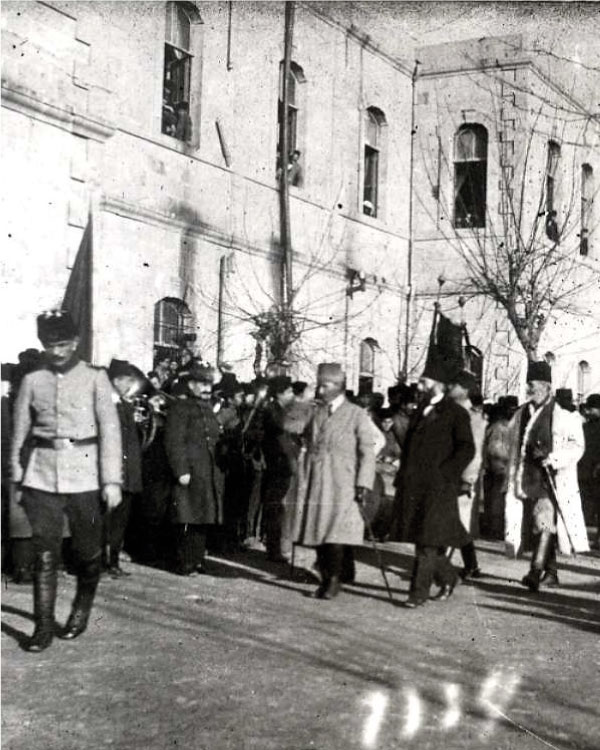
We are all ready to die, waiting for your order to save the country and nation from the enemy!”
And according to the records, there was a dialogue:
– Hello, sirs.
– Thanks Holiness Pasha
– Friends, why did you come here?
– We’re here to die on the way of Nation.
– Are you stable in your opinion?
– By oath…
This dialogue was made with the whole nation in Ankara as if it was promised a national struggle, a struggle for liberation.
Mustafa Kemal describes this enthusiastic welcome as follows:
“On the day of my first arrival to Ankara, I was only a citizen, an individual of the nation. I had no title, authority or role. In spite of this, Ankara and its environs always filled the plain with the children, women and the elderly from the city of Ankara to the Dikmen hill and welcomed me.
The street stretching from the station to the government office was dressed in old Turkish clothes on both sides, and were filled by Ankara youth with the knives and pistols in their hands. These young people and all the people with them were shouting: “We are all ready to die, waiting for your order to save the country and nation from the enemy!”

At that time the Ankara station was under the occupation of foreign officers and soldiers. These foreigners who thought that the people of Ankara were dead and ruined until that date saw that they could not stop themselves from showing their first concerns in the face of this high cheer.
19 May 1919 from Samsun to 27 December 1919 to Ankara
Mustafa Kemal, who went to Samsun on May 19, 1919 and started the struggle for Independence War he went to the provinces of Amasya, Erzurum, Sivas respectively and held congresses there. In all these congresses, decisions were taken to establish a government based on national will. Telegraphs were sent to the cities and they were asked to elect a representative.
A meeting place for representatives chosen over the turkey was necessary. Because of its geographical location and distance from the fronts, Atatürk thought that the War of Independence would be best managed from Ankara and the delegation completed the national struggle journey in Samsun with the members of the Delegation on the ridge of Dikmen in Ankara. Then he made the beginning of the War of Independence struggle here. Later, Ankara made the capital and formed the entire political structure.
Why Ankara?
Atatürk’s arrival in Ankara is very important for the establishment of the independent Republic of Turkey and the commencement of the Turkish War of Independence.
Many developments and preparations, such as the establishment of the Turkish Grand National Assembly and the establishment of the Turkish army, were carried out in Ankara. Ankara became the center of the national struggle, it began to play its role as the capital city already in those days. The reasons for the selection of Ankara include being in the center of Anatolia, the railway connection, the establishment of the telegraph network, the devotion of democracy to the belief of the people of Ankara and the love of Mustafa Kemal.
In his memoirs, Atatürk refers to this issue as follows: ”I learned Ankara in history rather than the geography book and learned it as the center of the republic. In fact, when I read the names of the small governments established in Anatolia upon the disintegration of the Seljuk administration, I saw the Republic of Ankara among some principalities. On the day when I first came to Ankara, where the pages of history introduced me as a republic center, I saw that despite the intervening centuries, the republic predisposition still continues in Ankara. Turkey pushes me to thinking about the most suitable center would be the first occasion Ankara is very old and is technically. “
From Steppe to Capital
The city Ankara of 27 December1919, in the middle of Anatolia, a barren, neglected city in which streams were passing. With the mud-brick houses it was a typical Central Anatolian city with a warm, welcoming and hospitable people living in it, most of the people were Muslim Turks.
At that time the population of the city is about 20 thousand. Most of the population was engaged in agriculture and mohair goat breeding was widespread.
When you looked in Samanpazarı, Ulus, Dis Kapi, Kale Ici, these settlements did not have the status of being the capital.
The location of the present Atatürk Forest Farm was a stony land.
Ulus, Kale and surrounding settlements were common. The part from Sıhhiye to Kavaklıdere was between the castle and its vicinity where the residents lived and the vineyard houses were empty. Here, Ataturk, with his strategic knowledge, great foresight, came to this steppe city, to manage the War of Independence from here, he chose to make this place an exemplary city and the capital of the nation.
When he came to Ankara, he first sat in the Agricultural School, then in the train station, in a building called the Steering Wheel. Ankara Municipality bought the vineyard house in Çankaya in 1921 and gave it to Atatürk.
Atatürk experienced the enthusiasm of the first years of the Republic with the troubled days of the War of Independence at the Çankaya Presidential Palace. He showed maximum effort to become the city’s worthy of being the capital of the new Republic of Turkey. Atatürk, who loved tree and green very much, was determined to turn this barren steppe city into green. In particular, he closely followed the efforts to establish Atatürk Forest Farm.
At the time, a stream was flowing in the farmland, a swamp in places, it was a barren place and a source of mosquito.
He gathered agricultural engineers to reform and green the place and set up a model farm here, despite their promises that it would take a lot of money and patience. As a matter of fact, he founded Atatürk Forest Farm, which is still the eye of Ankara today, with patience, love and spending his own labor and money.
As long as his health allowed, he established many schools, hospitals and factories and provided the city to be reborn; he had added the night to the day to establish a capital worthy of the new Republic. In fact, what they have done on this subject is long enough to be another writing topic.
It is possible to see Atatürk’s signature on every stone, every street, every building of today’s Ankara. May god bless your soul, Great Leader…

